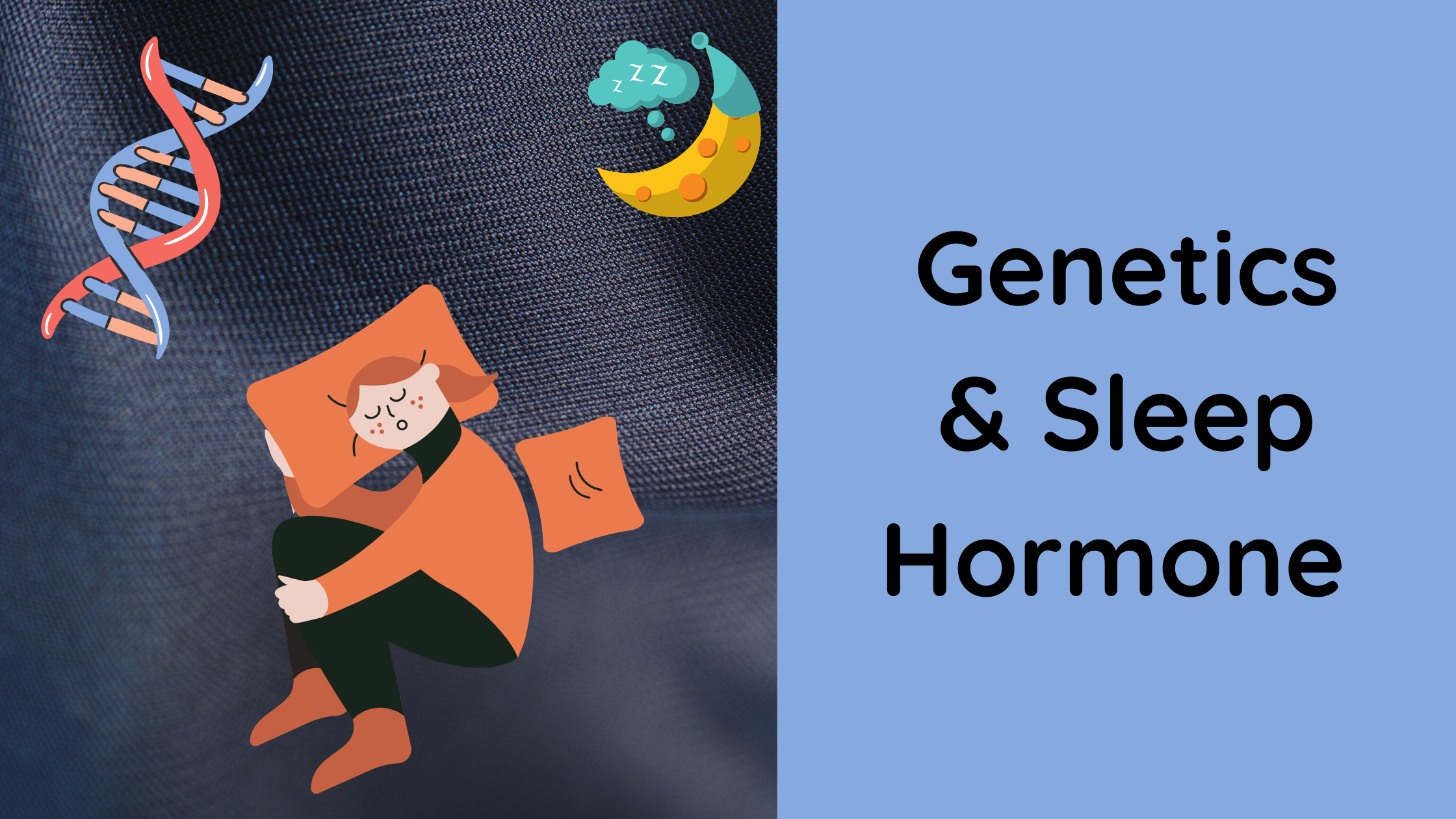Listen in English
Listen in Russian
Listen in Spanish
How do you know what is the best time for you to sleep? A lot of it has to do with our circadian rhythm, your stress level & work routine. Even with artificial light, most of us are awake during the day (when it is light outside) & asleep when it is dark. This coupling of sleep patterns to levels of light is regulated by sleep hormones: Melatonin.
Our sleep hormone coordinates secretion of insulin with our sleep-wake cycle. Our gene variants have a larger influence on the relationship between melatonin, sleep & insulin release. Some variants are linked to poor insulin function & high blood sugar levels.
Let us discuss in detail about Melatonin
Melatonin is a chemical messenger that is produced at night & makes us sleepy. It also coordinates the control of other physical parameters/functions with our sleep cycle such as blood pressure, body temperature & metabolism. Melatonin is produced by a small gland located in the centre of the brain called the Pineal gland. During daylight hours, this gland is inactive & produces little Melatonin. However during dark hours( night), Pineal gland gets activated & increases Melatonin production. The relationship between Melatonin & level of light is altogether a unique mechanism. During night, less light falls on our retina, the light sensitive layer of the back of our eyes. This drop in light level is then signalled to another part of the brain- suprachiasmatic nucleus(SCN). This is found in hypothalamus which is called our body’s internal clock & regulates circadian rhythm
During night, SCN stimulated Pineal gland to secrete Melatonin. As a result, this reaches our blood stream & has different impacts on our bodily functions- inhibits release of insulin, makes us feel sleepy & reducing our core body temperature. On the other hand, sunlight & artificial light causes SCN to suppress Melatonin production by Pineal gland. This is the reason it is advised why you should avoid exposure to artificial light such as mobile/laptop light & tube lights 2 hours prior to your sleep.
Level of Melatonin is high in bloodstream during night time while daylight during morning hours inhibits Melatonin production.
Insulin is produced by beta cells of Pancreas. These beta cells produce a receptor for Melatonin , MT1B Melatonin receptor which is coded by your MTNR1B gene. When levels of Melatonin are high during the night, Melatonin binds to MT1 receptor & suppresses secretion of insulin by beta cells of Pancreas. Therefore , your circulatory level of insulin falls during night.
As you all must be aware that insulin regulates movement of glucose from bloodstream to tissues & therefore makes the level of glucose in bloodstream to fall. It is important to note that a steady overnight supply of glucose in blood is required by our brain( brain is very active during sleep_. However, brain tissue does not require insulin to take up glucose from the bloodstream for fuel. By inhibiting insulin secretion, Melatonin keeps glucose level adequately high ensuring the brain is well fuelled during night.
Role of Genes in Insulin secretion
As shared above, MTNR1B gene codes for your Melatonin, MT1B receptor which is found on the surface of beta cells of the pancreas. When melatonin binds to this receptor, it inhibits release of insulin in your bloodstream. Different variants of the MTNR1B gene influence how many MT1B receptors beta cells produce. One Allele(variant)- G allele increases the amount of MT 1B on the surface of beta cells of Pancreas. When Pancreas binds to these multiple receptors, it inhibits insulin secretion more strongly thereby resulting in a low level of circulating insulin during night. This creates an issue when people have G allele in their MTNR1B eat a large carb rich meal in the evening when insulin secretion is suppressed by Melatonin. In such a scenario your blood sugar becomes excessively high since low levels of insulin makes it difficult to transport glucose from the bloodstream into tissues. If such folks adopt such a eating habit, they have a high risk of attracting type 2 diabetes & other metabolic syndrome diseases.
Depending upon MTNR1B gene variant , your melatonin, sleep & glucose traits can be categorised into
- High risk of insulin sleep dysfunction.
- Moderate risk of insulin sleep dysfunction
- Low risk of insulin sleep dysfunction.
Folks with high risk , should incorporate the following in their lifestyle:
- Have your last meal at least 4 hours before you sleep.
- Avoid consuming large amounts of fats & carbohydrates in your last meal.
- Optimise consumption of zinc.
Passion for Fitness offers genomics powered curated online fitness solutions in association with Mapmygenome which will help you get workout & nutrition aligned with your gene study. The program will also provide you insight into your immunity & genetic predisposition to specific health conditions.Discover your personal trait. Sign up for our program here.
